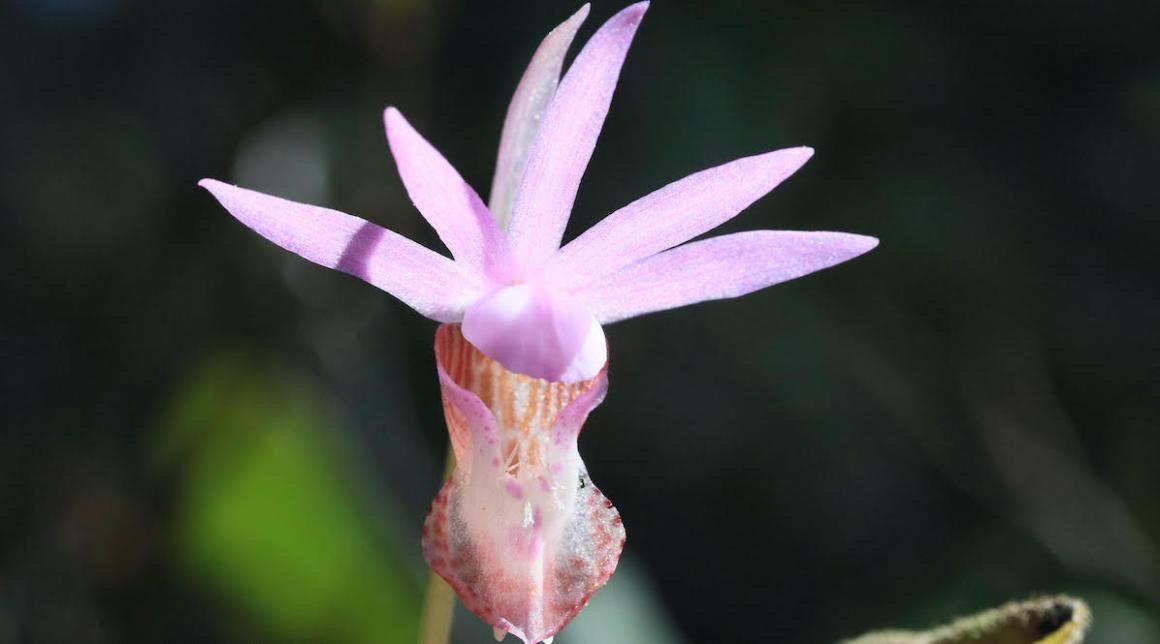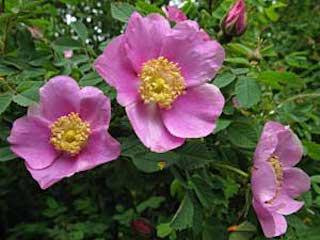
Treasure Your Connections, Even If You Can't Be With Them For A While Longer
By John S. Farnsworth
I’ve retired recently enough that people still ask me whether I miss teaching. Although there are parts of it, such as the long hours grading essays, that I’m happy to be done with, what I really miss is the community. This shouldn’t come as a surprise: during my last 12 years at Santa Clara University, I lived and worked in Swig Hall, an 11-story monolith I cohabited with 420 students, mostly first-years. Community is where you find it, even if it’s noisy sometimes.
I’m living on a small island now, off the Washington coast, about a thousand miles north of Swig. There are no elevators on this island, neither is there medical care. No cops, no stores, no services, no tourists, but there is a lot of forest: Douglas-fir, grand fir, western red cedar, hemlock, bigleaf maple and, near the water, madrone.
I’ve been trying to learn the plants in this new-to-me ecology. Last spring I made the acquaintance of the fairy slipper, Calypso bulbosa, the most delicate flower I’ve yet discovered in this archipelago. The fairy slipper is a member of the orchid family, and like one-third of all wild orchids, it attracts pollinators via scent without rewarding them with nectar. These plants are called “pollinators by deception,” and it’s thought that this scheme has evolved to avoid self-pollination. As a result, the fairy slippers live in relative isolation from each other, one here, the other over there. That way the bees won’t catch on to the deception.
These days, I’m thinking I’d rather be a native Nootka rose, Rosa nutkana, hanging out with dozens of blooms on the same bush, each of us on the tip of our own branch, waiting for our pollinators to roam from one bloom to the next. On a good day, a hummingbird might drop by.

Nootka Rose, or Rosa nutkana/Photo courtesy of Joanie Beldin
Fairy slipper? Nootka rose? During this time of social distancing, at the conclusion of a really awful year, we seldom get to decide where it’s best to take root. For many of us this will be the first Thanksgiving celebrated without extended family. If we want grandmom’s rolls on this year’s spread, many of us will have to bake them ourselves, from scratch, and it’s hard to know whether that will be worth the effort.
I will never forget my first collegiate Thanksgiving. I’d had a mid-term exam on Wednesday afternoon, so I ended up on the all-night Greyhound from Santa Fe, N.M. to Littleton, Colo. We arrived at dawn at a gravel bus stop near the South Platte River, and there he was, my dad, standing alone in the November chill, waiting for his eldest son, the first to have left for college. There is a lump in my throat as I write this memory; Dad passed away 21 years ago, and there’s nothing I wouldn’t give to be hugged once more like he hugged me at sunrise that Thanksgiving morning.
The memory of a hug is no substitute for the real thing. What we’ve all discovered this year is that connecting via Zoom isn’t quite the same as being there. Store-bought rolls will never replace something fresh from grandmother’s oven. We all have to live like fairy slippers for a while, distanced, isolated, masked-up, forgoing hugs.
My wife, Carol, and I keep telling each other that we’re good at this social distancing thing, and we want to believe this is true. I spend the mornings in my writing shack, hand-built from Douglas-firs I felled myself. A design researcher for Facebook, she works from the loft in our cabin, connecting digitally with designers, software engineers, project managers and other far-away researchers. We take a walk every day after lunch, even if it’s raining, realizing how precious it is to connect with another human being in this forest.
Our walk is not just a walk. It’s a practice. It’s a way of staying active, of getting out there, of attending to our mental health, maintaining our happiness. We connect with each other while we commune with the forest, carrying our binoculars every day in case there are critters upon which to spy. Carol is working on birding by ear, and I’m working on listening to my heart; I help her learn birdsong while she helps me learn heartsong. Even though we’re alone together day after day, we strengthen each other to make it through this time of isolation. I can’t imagine trying to do this alone.
A little more than two years ago, on Carol’s birthday, I was diagnosed with an aggressive strain of prostate cancer. The following day I got a letter from the university president granting me emeritus status. Among other things, this means that when I publish, I still do so as a member of the SCU faculty. I’m still very much part of the community I so cherish. That letter gave me the courage to face two arduous years of therapy, during which time I was fortunate to publish a couple books. I’m still writing—my editor and I call the work-in-progress “Book #3”—and still drawing strength from a community that’s situated over a thousand miles to the south.
Community is where you find it. I found a wonderful community up here called the Seattle Cancer Care Alliance, but I’m done with them now and they’re done with me, and that’s a good thing. I’ve recently enrolled in the long-term survivorship program at the Island Hospital over on Fidalgo Island, and I only have to visit them once every six months. The news here for friends, colleagues, former students and former dorm-mates is that you can scratch me off your worry list for now. (And thanks for all the encouragement when I needed it.)
The understory of the forest where I live is full of Nootka rose, evergreen salal, low Oregon grape, huckleberry and a whoosh of a flowering shrub called “ocean spray.” The deer love to browse on the roses, and whenever I see them doing so I chase them away. This may be why my closest neighbor, a retired travel editor for a major newspaper, refers to me in his blog as “John the Mad Birder.” But this birder spends his mornings writing and the better part of his afternoons splitting firewood. When I’m working on the woodpile I think often of former students, holding them in my heart and sending them vibes of encouragement, hoping that they’re able to build upon whatever they discovered at SCU.
The SCU Storytelling Team has invited me to blog for Illuminate from time to time, and I’ve eagerly taken them up on the offer. It gives me a chance to reconnect with a community that continues to energize me, at a time when we can all use another connection or two.
Treasure your connections, even if you can’t be with them for a while longer. However you can, draw strength from your community. A pandemic is best fought with patience, so focus on living in the present without being in a rush to get back to normal, not even for the holidays. If you need help, get help. Wherever you find joy, celebrate it. And never, ever, cross-pollinate by deception. Let’s leave that to the orchids.

